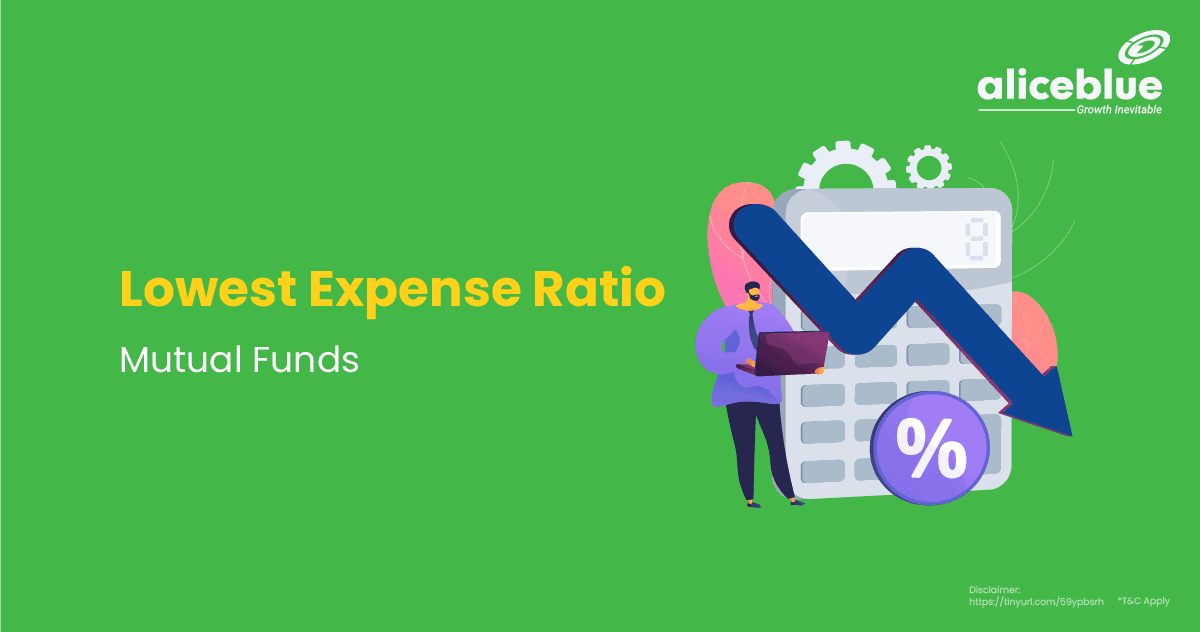Multi Cap Mutual Funds are equity mutual funds that invest in a diversified portfolio of stocks across companies of different market capitalizations. As the name suggests, these funds invest in stocks of companies with various market capitalizations, including small, mid, and large-cap companies.
This article covers:
- Multi Cap Mutual Funds Meaning
- Features of Multi Cap Mutual Funds
- Types of Multi Cap Funds
- Multi Cap Mutual Funds Returns
- Taxation on Multi Cap Funds
- Top Performing Multi Cap Mutual Funds
- How to invest in multi cap mutual fund?
- What are Multi Cap Mutual Funds- Quick Summary
- What are Multi Cap Mutual Funds- Frequently Asked Questions
Multi Cap Mutual Funds Meaning
Multi Cap Mutual Funds invest in a number of different stocks or securities belonging to different market caps and sectors at the same time. They are designed to provide diversification and help investors achieve their investment goals. Therefore it is well suited for investors looking for greater returns over a longer period.
It is important to remember that multi cap funds can also be risky. The benefit of investing in a Multi Cap Mutual Fund is that it allows you to access a wide range of stocks. This can help you to achieve your investment goals while taking a minimum risk.
As per SEBI, multi cap mutual funds should invest a minimum of 65% of their assets across small cap, mid cap, and large cap stocks. The proportion of these stocks varies from fund to fund, and the allocation is changed by fund managers of the fund.
Fund managers actively research and manage the funds. These funds typically have a higher concentration in certain industries or sectors, which can result in higher risk. However, they also have the potential for greater returns. Multi cap mutual funds are a great way to get exposure to a variety of different investments while also maintaining some level of safety.
Features of Multi Cap Mutual Funds
Diversification
Mutual funds are a great way to invest your money and achieve returns while also diversifying your portfolio. Multi-cap mutual funds are investment vehicles that hold a diverse portfolio of securities from multiple market capitalization categories, such as small-cap, mid-cap, and large-cap stocks.
Returns
Returns from multi cap mutual funds can be quite good, especially if you’re looking for a balanced investment. The average returns can range from 10 to 15%. However, the returns on multi cap mutual funds are not the same every year.
Flexibility
The fund managers of multi-cap mutual funds have the flexibility to adjust their investment portfolios as per their changing investment needs. These funds have the freedom to invest across different market capitalization categories, which allows the fund manager to make changes to the portfolio as per market conditions and capitalize on potential growth opportunities.
Types of Multi Cap Funds
Multi Cap Funds With Focus on Large-Cap Stocks
These funds primarily invest in large-cap companies, which are generally well-established and have a large market capitalization. These funds are a good option for conservative investors who are looking for stability and have a lower risk profile. They also tend to be less volatile compared to other types of mutual funds.
Multi Cap Funds With a Focus on Mid/Small-Cap Stocks
These funds invest mainly in mid-cap and small-cap companies, which are considered risky but also have higher growth potential. These funds may offer the opportunity for higher returns, but they also come with greater market volatility. They are suitable for investors who are comfortable with taking on higher risks in exchange for the potential for higher returns.
No Specific Focus on Market Capitalisation
No Specific Focus on Market Capitalisation: These multi cap funds do not have a specific focus on any particular market capitalization category. Instead, they invest in a diverse portfolio of companies from various market capitalization categories.
This fund type aims to balance risk and reward by diversifying investments across multiple sectors and market capitalization categories. It is suitable for investors who are looking for a balanced approach to investing with a focus on long-term growth.
Multi Cap Mutual Funds Returns
Multi cap mutual funds tend to give higher returns than large cap funds, index funds, and hybrid funds. However, if we compare the returns from multi cap funds with small cap fund and mid cap fund, multi cap fund offers comparatively lower returns than small cap and mid cap fund.
Also, the fund managers determine the returns as they decide which stocks to buy and when to buy. They do active research and follow a strategy that aligns with the mutual fund’s objective, and they aim to provide the best return possible to their investors. The role of a fund manager is huge role in a mutual fund.
As a smart investor, you should check the experience of the fund manager and their expertise in mutual funds. Check the past performance of the mutual funds. However, you need to keep in mind that the past performance of a mutual fund does not guarantee that it will provide the same returns in the future as well. So make sure to do enough research and ask your investment advisor to make well-informed decisions.
Taxation on Multi Cap Funds
Taxes on multi cap funds are determined by the duration of time the investment is held. Short-term gains, which are made from selling the investment within a year, are taxed at a rate of 15%. Long-term gains from selling the investment after holding it for more than a year are taxed differently. Gains up to INR 100,000 in a financial year are tax-free, while gains above this amount are taxed at 10%.
Let’s say an investor bought units of a multi-cap mutual fund for INR 50,000 in January 2021 and sold them in February 2022 for INR 70,000. In this case, the investor has held the investment for over a year, so the profits would be long-term gains.
The long-term gains would be calculated as INR 70,000 – INR 50,000 = INR 20,000. Since the gains are less than INR 100,000, the investor would not have to pay any tax.
However, if the investor sold the units of the multi-cap mutual fund in January 2022 for INR 60,000, then the gains would be considered short-term gains. In this case, the gains would be calculated as INR 60,000 – INR 50,000 = INR 10,000. The investor would have to pay a tax of 15% on this amount, which would be INR 1,500.
Being aware of these tax implications is important, as they can impact the post-tax returns you receive from your multi cap fund investment.
Top Performing Multi Cap Mutual Funds
| Multi cap mutual fund name | Returns | Expense ratio | AUM (Fund size) | Minimum investment |
| Quant active fund direct growth | 19.5% | 0.58% | Rs. 3,544 Crs | Lumpsum: Rs. 5,000SIP: Rs. 1000 |
| Parag parikh flexi cap fund direct growth | 18.68% | 0.76% | Rs. 28,248 Crs | Lumpsum: Rs. 1,000SIP: Rs. 1000 |
| PGIM India flexi cap fund direct growth | 13.81% | 0.37% | Rs. 5,284 Crs | Lumpsum: Rs. 5,000SIP: Rs. 1000 |
| Edelweiss flexi cap fund direct growth | 12.46% | 0.5% | Rs. 1,066 Crs | Lumpsum: Rs. 5,000SIP: Rs. 500 |
| Invesco India multi cap fund direct growth | 17.32% | 0.65% | Rs. 2,376 Crs | Lumpsum: Rs. 1,000SIP: Rs. 500 |
| Canara Robeco flexi cap fund direct growth | 13.93% | 0.52% | Rs. 8,730 Crs | Lumpsum: Rs. 5,000SIP: Rs. 1000 |
| ICICI prudential multicap fund direct plan growth | 14.84% | 1.02% | Rs. 7,037 Crs | Lumpsum: Rs. 5,000SIP: Rs. 1000 |
How to invest in multi cap mutual fund?
- The first thing you need to do is open a Demat account with Alice Blue.
- Once you open an account, hover on the “Products” option and click on “Mutual Funds”.
- Log in to your account and search the list of multi cap mutual funds available.
- Check the various charges associated with multi cap mutual funds, such as expense ratio, exit load, or any other charges. Make sure that they do not have a high expense ratio, as it can reduce your profit.
- Compare various multi cap mutual funds by checking their past returns, fund manager’s experience, and expense ratios to make informed decisions.
- Check the minimum investment amount in both SIP and lump sum.
- After you decide on the mutual fund you are willing to invest in. Add money to your Demat account to invest.
- If you are making a lumpsum investment then you will have to have to invest a large sum of money at once. On the contrary, if you are investing through SIP, the chosen SIP amount will be deducted from your bank account at regular intervals.
Do you want to expand your knowledge about mutual funds? We’ve got a list of must-read blogs that will help you do just that. Just click on the articles to find out more.
What are Multi Cap Mutual Funds- Quick Summary
- Multi Cap Mutual Funds are equity mutual funds that invest in a diversified portfolio of stocks across companies of different market capitalizations.
- Mutual funds are a great way to invest your money and achieve returns while also diversifying your portfolio.
- Types of Multi Cap Funds
- Multi Cap Funds With Focus on Large-Cap Stocks
- Multi Cap Funds With a Focus on Mid/Small-Cap Stocks
- No Specific Focus on Market Capitalisation
- Multi cap mutual funds tend to give higher returns than large cap funds, index funds, and hybrid funds.
- Multi cap fund taxes vary based on the investment holding period. Selling within a year results in a 15% tax on short-term gains. Selling after holding for more than a year, gains up to INR 100,000 are tax-free, while gains above this amount are taxed at 10%.
- You can invest in multi cap funds via Alice blue
What are Multi Cap Mutual Funds- Frequently Asked Questions
1. Is it good to invest in multi cap funds?
Yes, it is good to invest in multi cap funds if you want to start investing in large cap, mid cap, and small cap stocks in one investment option. However, the proportion of investing in these stocks can vary from fund to fund. If you have just started your investment journey and looking for exposure to the equity market, then investing in multi cap funds can be a good way to start.
2. Are multi cap funds safe?
Multi cap funds are linked to the stock market and the returns on these funds are not guaranteed. Some years you may earn stellar returns, and some years you may not even earn inflation-beating returns. The returns on these funds are determined by various factors such as market sentiment, the experience of the fund managers, and macroeconomic factors. So, it is not safe to invest if you are looking to earn stable returns.
3. Who should invest in multi cap funds?
Investors with a medium to long-term investment horizon and who want to diversify their investment across different market cap stocks can invest in multi cap funds. The risk and returns on these investments are balanced. However, investors should consider their investment goals, risk tolerance, and timeline of the investment before investing in any financial instrument.
4. Which is the best multi cap mutual fund?
Quant Active Fund direct growth is the best multi cap mutual fund.
5. Is multi cap fund good for the long term?
There is no definite answer to this question as it depends on a number of factors, such as investment objectives, risk tolerance, and time horizon. It is majorly determined by the type of investor you are.
For example, if you are a conservative investor, then it may not be a suitable option for you. On the contrary, if you are an aggressive investor, you can consider investing in a multi cap mutual fund. However, in general, multi cap funds are often considered to be a suitable investment option for long term investors.
6. What is the difference between Flexi cap and Multi Cap Fund?
Multi-cap funds invest in different market capitalization stocks with equal allocation, while Flexi cap funds have no fixed allocation and invest in companies from different market capitalization and sectors.
Flexi cap funds have more freedom in choosing stocks and mainly invest in large-cap stocks, making them less risky. Both funds have tax implications and are suitable for different types of investors depending on their risk tolerance. It is recommended to stay invested for at least five years to maximize returns.
Take your understanding of mutual funds to the next level! Explore our curated collection of engaging blogs that empower your investment decisions. Click now to embark on this enriching journey!







